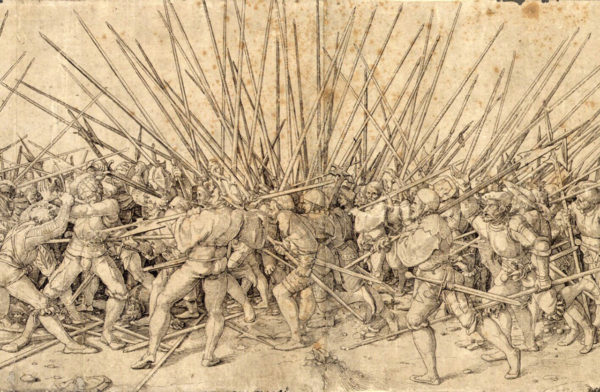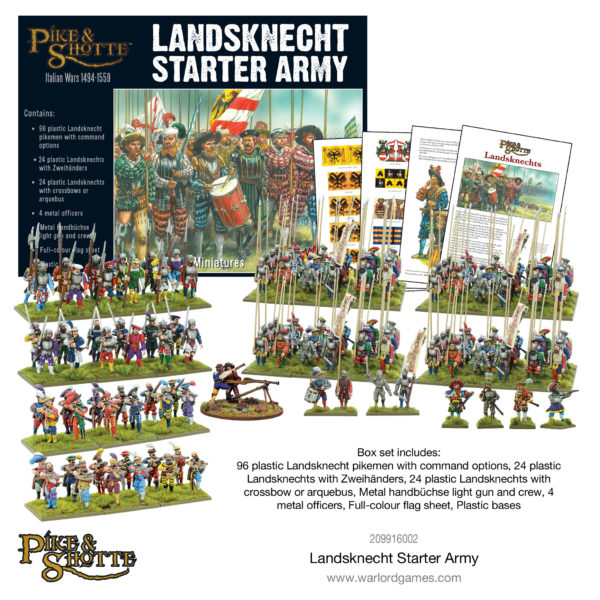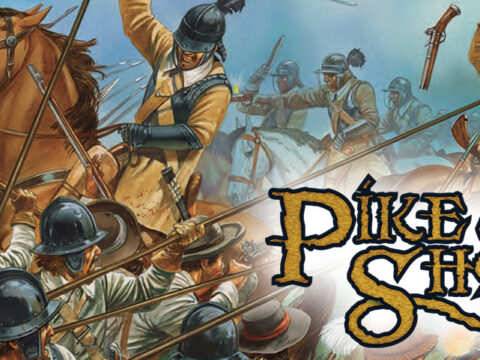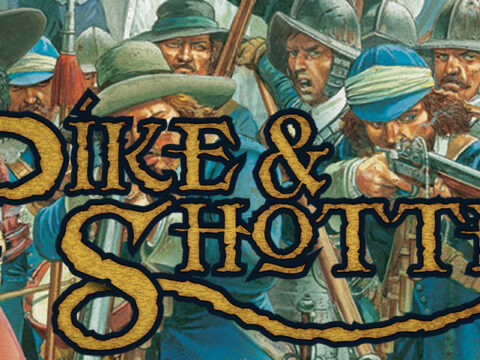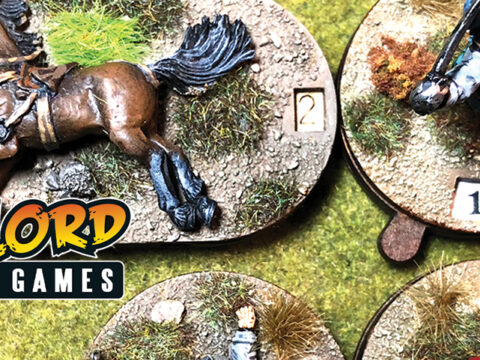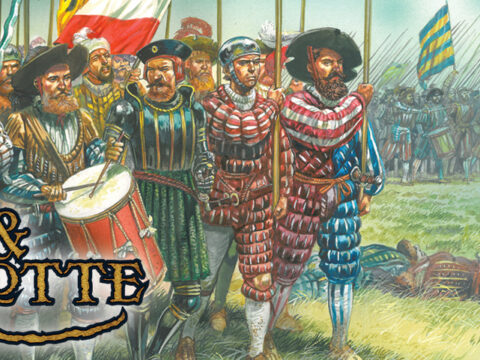Following our look at the flamboyant Landsknechts last week, today we’re uncovering the secrets of the soberer Swiss mercenaries that were the German’s arch-rivals.
The Swiss Reisläufer (one who goes to war), were renowned for their service in foreign armies during the late fifteenth and sixteenth centuries, particularly for their mastery of early pike tactics and exceptional discipline.
Their reputation was founded on a series of successful defensive wars against the Austrian Hapsburgs, followed by campaigns of regional expansion into Italy during the latter part of the fifteenth century.
As the major European powers transitioned away from using feudal obligation to fill out their ranks, the demand for professional soldiers exploded. Limited opportunities in the largely rural Swiss cantons and an ingrained sense of adventure would draw many a Swiss youth into service with a mercenary company.
Swiss mercenaries would effectively write the book on pike tactics, becoming an essential part of many European armies. Using columns of pikemen and halberdiers, supported by limited numbers of crossbowmen and arquebusiers, the Swiss would deliver a series of crushing hammer blows against the enemy infantry line, impervious to cavalry charges.
Their ascendency was eventually challenged by the rise of the German Landsknecht and Spanish use of the Tercio. Both these formations embraced combined-arms warfare, combining pikemen, swordsmen, hand gunners (or crossbowmen) and artillery into a single unit which proved to be considerably more flexible and resilient than the pike-dominated Swiss column. 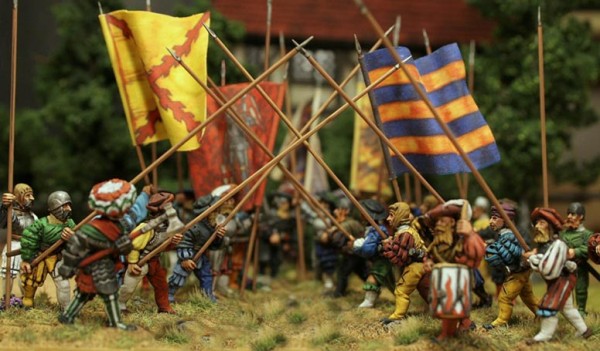
The battles of Marignano and Bicocca marked the end of Swiss domination, where the proliferation of gunpowder weapons and defensive tactics proved to be the attack column’s undoing. Flayed by cannon fire on the way in, only to be met by doughty veterans brandishing two-handed swords and nimble sword-and-buckler men during the push of pike, the Swiss’ mastery of the pike had been effectively countered.
Swiss Mercenaries in Pike & Shotte
If you’re looking for an opponent to match your brand new landsknechts on the battlefield, adding some Swiss Pikemen to an existing Italian Wars or Wars of Religion army is the way to go.
The best place to start, somewhat ironically, is with the beautiful plastic landsknecht kits we featured last week. You’ll need a greater proportion of pikemen, with fewer supporting missile troops. You’ll want to include some halberdiers, but no two-handed swordsmen as the Swiss didn’t use them.
When assembling your new band of Swiss mercenaries, you may want to trim off some of the more flamboyant elements of the landsknechts, such as the feathery plumes on hats and helmets. You’ll also need to leave off the landsknecht’s iconic katzbalger, as this sword was unique to the German mercenaries.
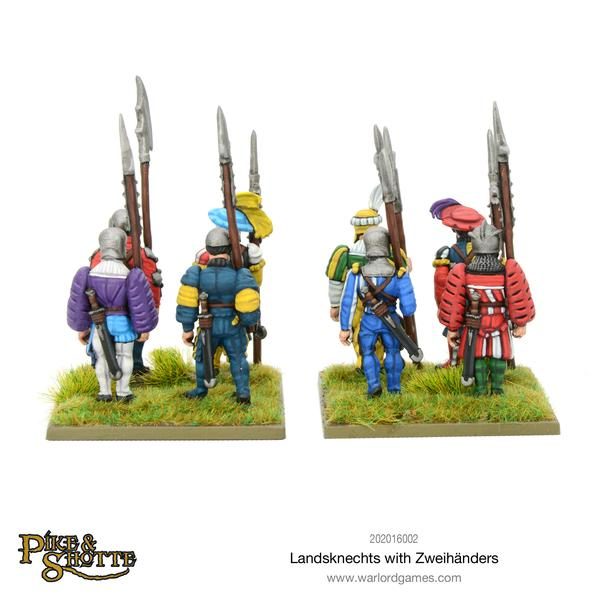
Some Landsknecht halberdiers wearing their iconic katzbalgers in belt loops on their backs. You’ll need to leave these off if you’re building Swiss mercenaries.
You’ll also need to make your Swiss mercenaries look a little more uniform in appearance. Many units dressed in the colours of their city or canton. We’ll cover some of these schemes in a future article.
Into Battle!
If you’ve been inspired to leave the safety of your canton and become a Reisläufer, the best place to start is with the Landsknecht starter army!


